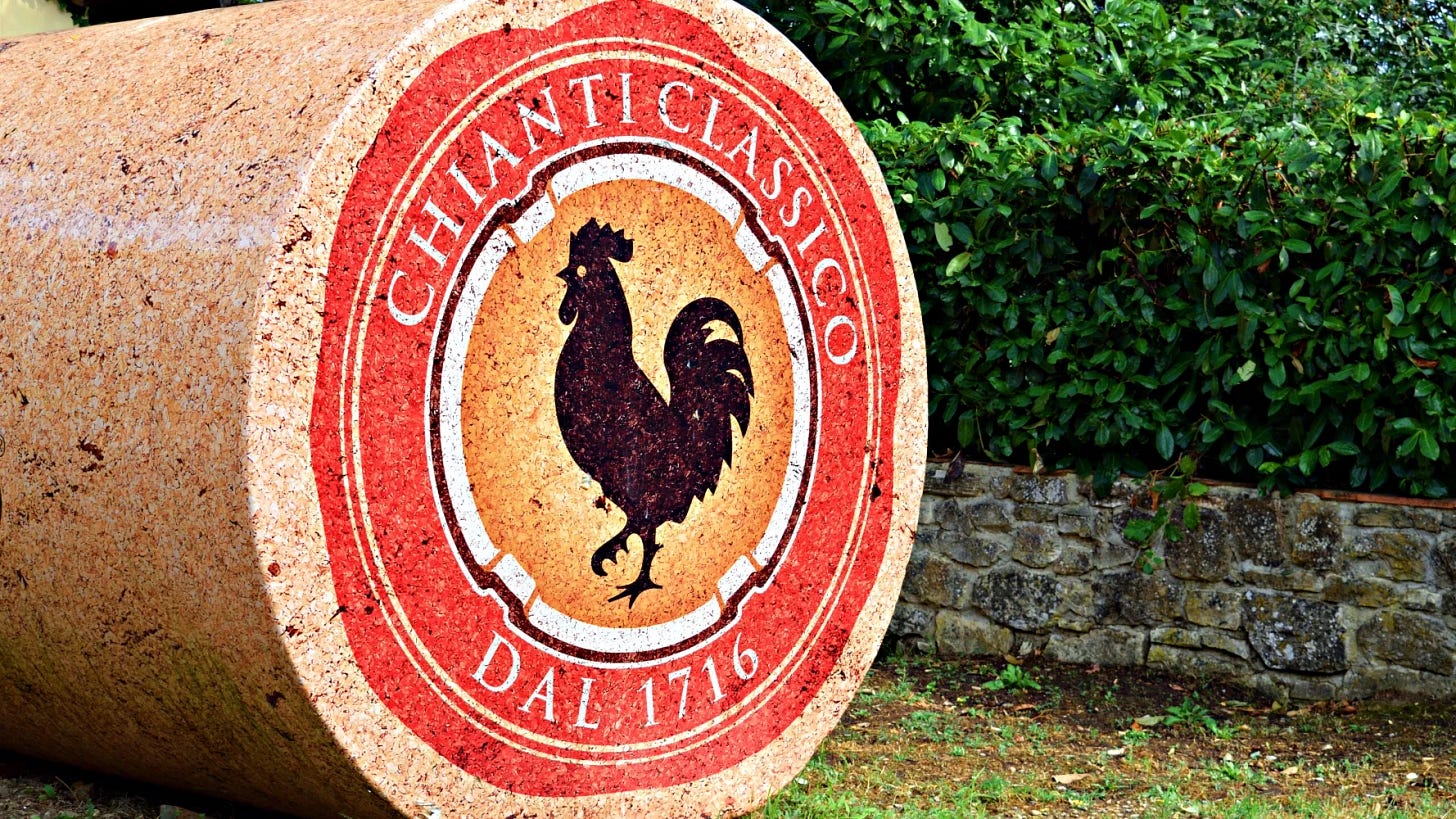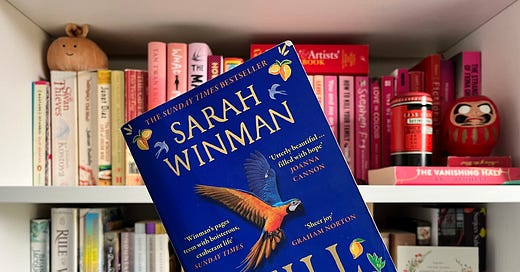Still Life by Sarah Winman x Chianti Classico, Sangiovese
‘And for two hours the wine was poured, the cheese cut, and the two men talked. Of what? Who knows? Of love, of war, of the past. And they listened with hearts instead of ears…’
The Book: Still Life by Sarah Winman
There is one word for Still Life by Sarah Winman and that word is lovely.
It is just the loveliest of novels. It is kind. It unfurls slowly and comfortably - much like one of those slow and comfortable summer afternoons complete with a bottle of wine passing as easily as stories between old friends, conversation as free and flowing, everyone and everything full of warmth. I read it initially for my IRL book group and we all seemed to agree that this is a novel where you can almost taste the prose, feel the heat of the Italian sun as you read. Yes, it’s a longer read, but it’s steady. For fans of chosen families, unlikely loves, and gentler novels - this is the book for you.
The story follows Ulysses ‘Temp’ Temper, who we first meet as a young soldier in Italy during World War II. In the most unlikely of meetings, he comes across Miss Evelyn Skinner, a 64-year-old art historian who has left her glass of Classico and camera-enthusiast not-quite-girlfriend for a late night stroll. On paper, she claims to be in the country on a mission to identify and protect masterpieces hidden in the Tuscan hills. She may or may not also be a spy. We don’t linger long in this moment - but the ripples of their meeting change Ulysses’ life forever. It leads to an unexpected act of both heroism and kindness, which in time is repayed such that he can leave his life in London’s East End for a new one in Florence. It leads to his decision to become a globe maker there, carefully moulding and remaking the world over and over. It opens his eyes and through him those of the people around him - because he does not forget Evelyn’s words about the value of aesthetics. She says, ‘beautiful art opens our eyes to the beauty of the world … It repositions our sight and judgment. Captures forever that which is fleeting. Art versus humanity is not the question, Ulysses. One doesn’t exist without the other.’ And the novel unpacks itself from there.
One of my favourite things about Winman’s writing is the fact that it’s not what happens to people - like war or gambling wins or surprise inheritances - that drives her novel. The sure-footed pace is set by the relationships between characters. There’s Peg, Ulysses’ ex-wife and sometime lover; Col, the sarcastic grump who runs The Stoat and Parrot; Old Cress, with his amazing luck and gentle heart and who I believe is the soul of this novel; Aldo, a Florentine who takes Ulysses’ makeshift family under his wing and becomes a translator of culture and history. There’s even a section with a humorously hopeless and still earnest E.M. Forster. All of them are so wonderfully rounded - quirky and fallible and sometimes frustrating but ultimately kind. I think it’s because of this that there’s a kind of magic in the prose. You genuinely forget that these are fictional characters and delight in their goodness.
Of course, it would be remiss to talk about Still Life without discussing the Great Flood of Florence and the mud angels. It was the worst natural disaster the city had ever faced, killing dozens of people, destroying countless artworks as well as nearly a million books from the Biblioteca Nazionale. But the response to the flood was a global one - with people from all over the world coming to help save the city that birthed the Renaissance. This included experts who found new ways to restore art (including Vasari’s Last Supper) and funds for labs to help clean marble of the oil that came in with the floodwaters. There’s a brilliant Guardian article about this by Stephanie Kirchgaessner that’s worth a read if you want more about the impact this had on the city, but what Winman captures in Still Life is really about the drive of so many young people, all coming out to help salvage what they could simply because art matters. Even as Ulysses lifts his beautiful globes above the water to try and take even a few to safety (I could spend paragraphs talking about the symbolism here), the star of the moment is the surge of unity after the flood, the sense of European togetherness as first the city and then young people from all over the continent come to help.
People just help each other in this novel. They are generous with time, money, support, love. It was a perfect read - full of humour and gentleness and openness and beautiful prose. I’m a bit purple about it, perhaps. But I look forward to rereading it and I can’t wait to hear what you all think too.

The Pairing: Villa Cafaggio, Chianti Classico (Sangiovese 2020)
Could there be any other pairing that the Chianti Classico? A leading Tuscan DOCG zone which spans a huge area between Florence and Siena, Evelyn herself comments on the quality of the classico in the very first pages of Still Life. With that moment in mind, I went on a little adventure to Waitrose, keeping an eye out for the tell-tale black rooster of the Chianti Classico Wine Consortium.
The Wine: Another Organic wine, the Villa Cafaggio is based in Greve in Chianti, near Panzano. This little hamlet (population less than a thousand) is nestled in the ‘Conca d’Oro’ (Golden basin), an area the internet names the finest zone for producing Chianti Classico. The estate has a very long history, with records going back 600 years, although wine production really became its thing in the 1960s when the Farkas family decided to renovate the wine cellars and replant the vines.
Tasting Notes: This wine is juicy - think red fruit, cloves and spice, slightly more than medium-bodied. Lovely deep colour. One that you love to smell but with enough tannin to slow you down just a little when drinking. Lots of flavour but not a punch-you-in-face fruit juice that I’ve found in other Chiantis.
Please note, I’ve heard this particular wine described as a bit ‘marmite’ because folks either love it or hate it. Others say that the quality / levels can vary bottle by bottle not just vintage, which is a little tricky. The one I had was a solid wine that went well with a beef ragu and probably benefited from being decanted a few hours before drinking.
Where can I buy it: Waitrose have a decent selection of Classicos at a range of prices from £14.99 to £39.99. The one I have here was from the more reasonable end, partly because it’s also a ‘buyers choice’. Majestic also have a number on offer (again a big range from £5.99 - £24.99) so if you want to add one to your Mixed Six, there’s some solid choices to consider.
Fun Facts: Panzano is also home to Dario Cecchini, the famous butcher and restauranteur who compares his work to poetry. It’s definitely worth looking him up if you’re planning a trip to the area any time soon!
Have you read Still Life by Sarah Winman?
Or do you have an opinion about Chianti - Classico or otherwise? Let’s start a conversation and see where it goes.







Ah so glad you love the premise! I’m a total substack novice currently but very excited to share and connect and chat books! I’m totally with you on wanting to move to Florence - or at least visit. Still Life absolutely captured my heart and a definite travel bug too. Will have to check out A Year of Marvellous Ways too!! Looking forward to hearing your thoughts on it :)